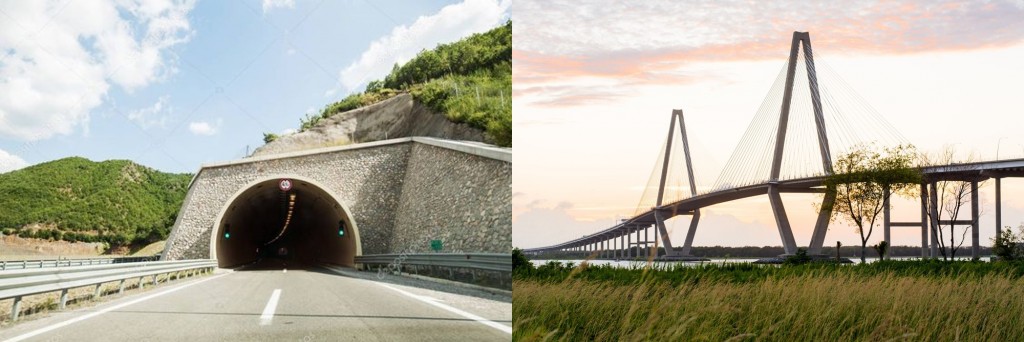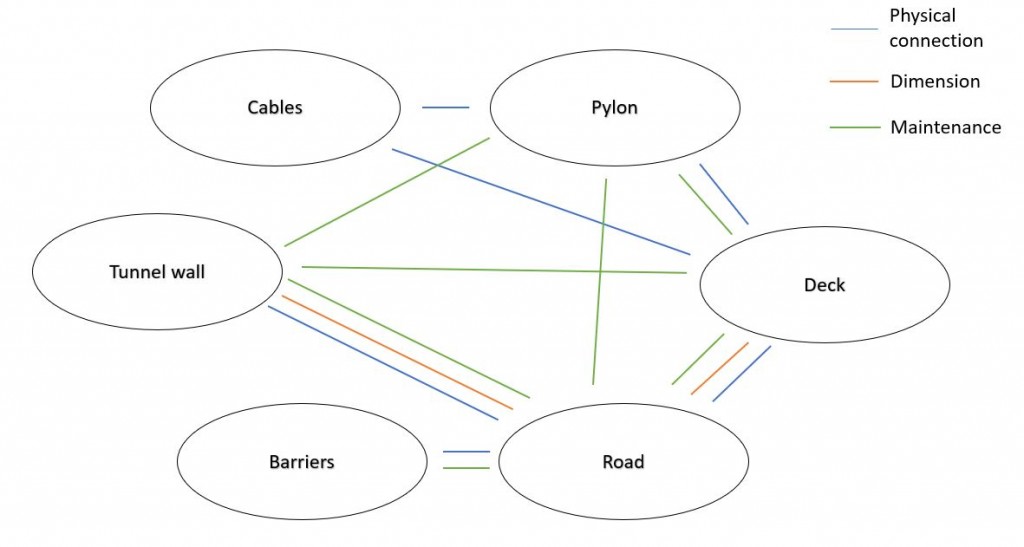Roadways are typically large and complex systems that connect different cities and countries. These infrastructures have a very long life. Nevertheless, degradation is a law of nature that can only be prevented by carrying out maintenance actions.
As supporting structures, bridges and tunnels are part of the network infrastructure. These two civil structures are in our focus for the establishment of an integration context.
The integration system is a cable-stayed bridge that links between two mountains. The cable-stayed bridge is followed by a highway tunnel that continues in the mountain. This kind of arrangement of systems is often built in South America where most of the terrain is highland. To make the integration between the systems, many changes in the measures of each system has been carried out to have an holistic integrated system.
To understand these systems and its subsystems better, an explanation about five different systems is presented:
- Cable-stayed bridge
- Highway tunnel
- Multi-lane highway bridge
- Prestressed concrete viaduct
- Road (motorway)
One subsystem of each above-mentioned system is chosen for the establishment of our integrated system:
- Pylon
- Tunnel Wall
- Deck
- Barriers
- Road
The cables of the cable-stayed bridge are taken into consideration for the maintenance planning. But for the sake of simplicity, the cables are neglected for the life cycle analysis since the simulation model in our R script already takes a long time to run.
The graphical representation below (Figure 1) expresses the relationships between the subsystems regarding the phsyical connection, maintenance and dimension.
Figure 1 – Relationship between the subsystems
Go to next page: Goal and Scope

